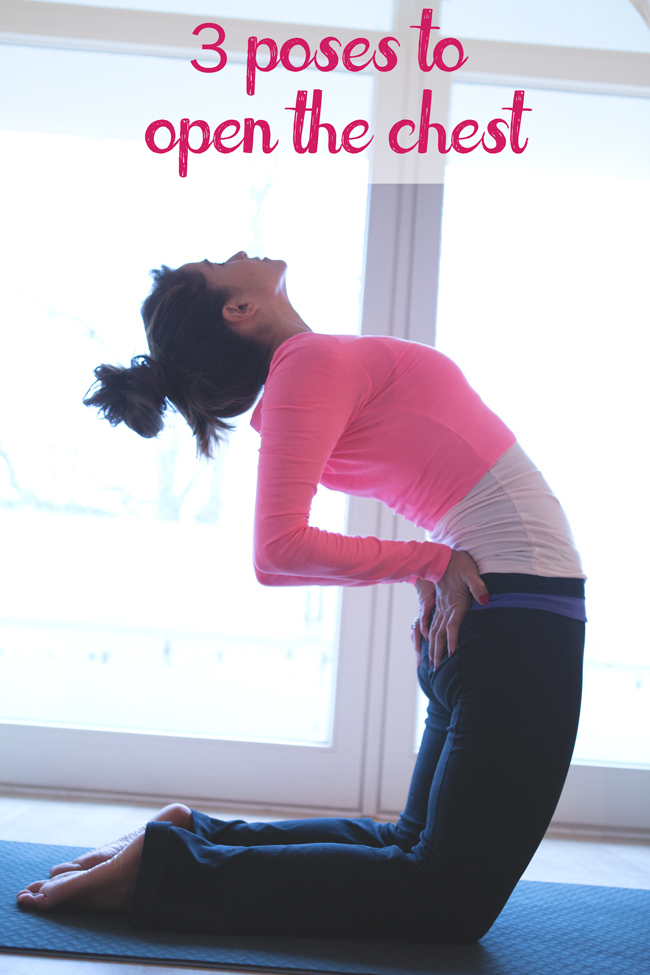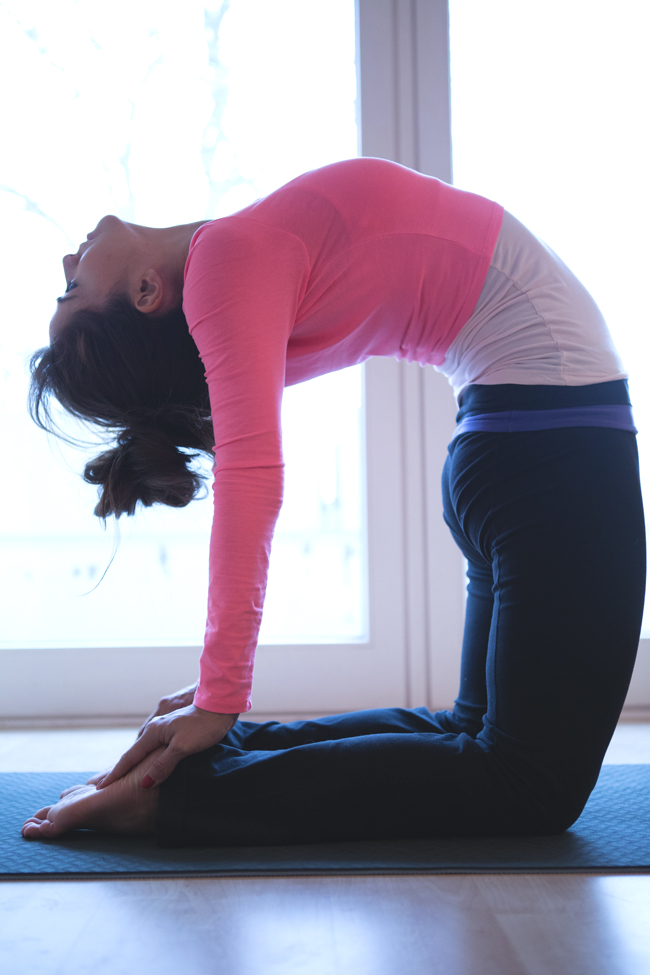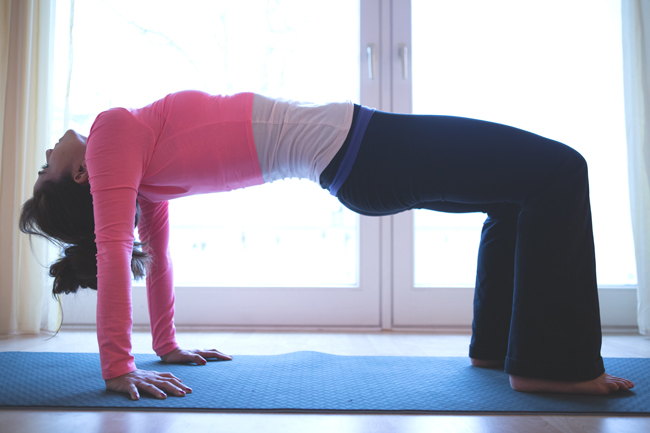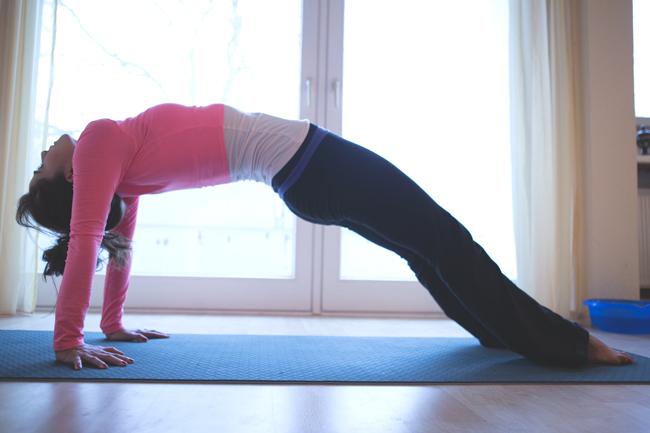I don't know about you, but growing up, my mom always used to tell me to stand up straight and stop slouching. You were told the same, right?
Turns out we should've listened better because hunching over isn't good for a number of reasons. When the shoulders are rounded, the chest muscles become smaller and this impacts breathing. The lungs can't expand as much, so we start breathing shallowly. This might not seem like a big deal, but shallow breath is a trigger for anxiety.
Tight chest and shoulder muscles may cause upper back pain, so making a habit of doing these stretches may be helpful.
For people who like to golf, swim, and play tennis, stretching and opening up the chest is a great way to improve. A golf swing, a swimmer's stoke, and a tennis serve will all improve with greater flexibility in the chest and shoulders.
First Pose: Beginner's Variation of Camel Pose
Camel pose is pretty intense, so I have a beginner's version shown above. Knees are hip distance, feet are in line with the knees. Bring the palms to where the hip bones begin, fingers pointing down. On an inhale, push the pelvis forward as the upper body leans back. Exhale the shoulders away from the ears. Breathe 3-5 breaths here.
Camel Pose
If the beginner's variation came easily, give full camel a try. From the beginner's variation, bring the hands down to cup the bottom of the feet, fingers toward toes. Lift the chest, keep the pelvis pushing forward, and let the head go back if that feels okay for the neck. Breathe 5-7 breaths here and come directly into child's pose after to avoid getting dizzy. (More detailed pointers for camel pose here.)
Pin it! Ways to open up the chest and shoulders
Second Pose: Table (Beginner option instead of Purvottanasana)
For table, begin seated. Bring the feet halfway back toward the pelvis, hip distance apart. Bring the hands behind the body about 7 inches, fingers pointing toward toes. Inhale and lift the pelvis so it comes in line with the body. Exhale shoulders away from the ears. Let the head go back if it feels okay for the neck. Keep knees directly over ankles. Breathe 3-5 full breaths here.
Purvottanasana
Purvottanasana
If you're ready to move on from the beginner's variation, try the full expression of purvottanasana, shown above. Begin seated, with the legs straight out in front, feet hip distance. Hands are 7 inches behind the body, fingers pointing towards feet. Inhale and lift the pelvis high until the bottoms of the feet touch the mat. Press into all four corners of both feet. Lift the chest high, relax shoulders away from the ears. Let the head go back if it feels okay for the neck. Breathe 5-7 full breaths here.
Low lunge
Third Pose: Low Lunge
Lastly, a pose that's suitable for everyone! Low lunge stretches the hip flexors and when we lean back, the whole front body including the chest and shoulders. Keep the back foot toes curled underneath the foot. This helps to engage the small muscles in the feet. Without actually moving the knee, visualize the back knee being magnetized toward the front foot. This subtle micro-movement will help the pelvic floor to lift. Ok, from here, bring the hands to the heart and exhale the upper back back as you look up. Relax shoulders away from the ears and feel the shoulder blades melt down the back. Breathe 5-7 full breaths here. (More detailed pointers for low lunge here.)
child's pose
Always finish every sequence with a restorative pose like child's pose, shown above.
PS- My least favorite yoga poses.






